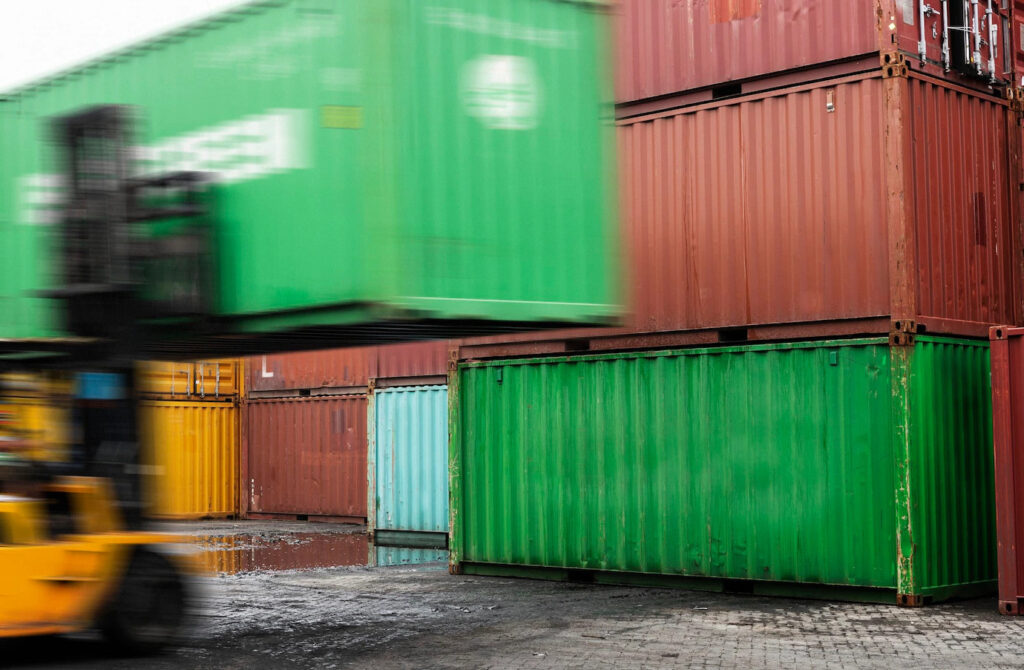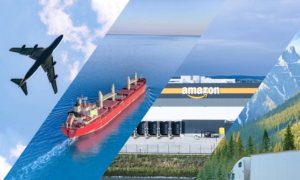Logistics is a vital part of any business, but it also comes with a significant environmental cost. Transporting goods, packaging materials, storing inventory, and managing returns all generate greenhouse gas emissions, waste, and pollution. How can businesses reduce their environmental impact while still meeting customer demand and maintaining profitability?
This is where green logistics comes in. Green logistics describes all attempts to measure and minimize the ecological impact of logistics activities. It includes all activities of the forward and reverse flows of products, information, and services between the point of origin and the point of consumption. Green logistics aims to create a more sustainable and circular supply chain that reduces waste, saves resources, and protects the planet.
In this blog post, we will explore some of the benefits and strategies of green logistics for transportation and warehousing, as well as some of the challenges and opportunities for businesses that want to adopt more eco-friendly practices.
Benefits of green logistics

Green logistics can bring many benefits to businesses, such as:
- Cost savings: By implementing green logistics practices, businesses can save money on fuel, energy, packaging, waste disposal, and regulatory compliance. For example, optimizing routes, consolidating shipments, using alternative fuels, and improving vehicle maintenance can reduce fuel consumption and emissions. Similarly, using reusable or recyclable packaging materials, reducing packaging size and weight, and implementing reverse logistics can reduce packaging costs and waste. Moreover, green logistics can help businesses avoid fines and penalties for violating environmental regulations or standards.
- Customer satisfaction: Green logistics can also enhance customer satisfaction and loyalty by meeting their expectations and preferences for more sustainable products and services. Customers are becoming more aware and concerned about the environmental impact of their purchases, and they are willing to pay more or switch brands for greener options. According to a recent survey by IBM, 57% of consumers are willing to change their shopping habits to reduce environmental impact. By adopting green logistics practices, businesses can demonstrate their commitment to corporate social responsibility and environmental stewardship, and differentiate themselves from competitors.
- Competitive advantage: Green logistics can also give businesses a competitive edge in the market by improving their efficiency, productivity, quality, and innovation. By streamlining processes, eliminating waste, reducing errors, and enhancing collaboration, green logistics can improve operational performance and customer service. Furthermore, green logistics can foster innovation by encouraging businesses to explore new technologies, solutions, and business models that are more sustainable and profitable.
Strategies for green logistics

There are many strategies that businesses can implement to make their logistics activities more eco-friendly. Here are some examples:
- Transportation: Transportation is one of the main sources of greenhouse gas emissions in logistics. To reduce its environmental impact, businesses can adopt various strategies such as:
- Optimizing routes and load capacity to minimize distance traveled and empty trips
- Consolidating shipments with other carriers or shippers to increase efficiency and reduce costs
- Using alternative modes of transport such as rail, water, or air when possible
- Using alternative fuels such as biodiesel, ethanol, hydrogen, or electricity
- Improving vehicle efficiency by using aerodynamic designs, low-rolling-resistance tires, hybrid or electric engines
- Implementing driver training programs to promote eco-driving behaviors such as avoiding idling, speeding, or harsh braking
- Packaging: Packaging is another major source of waste and pollution in logistics. To reduce its environmental impact, businesses can adopt various strategies such as:
- Using reusable or recyclable packaging materials such as cardboard, paper, wood, metal, or bioplastics
- Reducing packaging size and weight by using less material, eliminating unnecessary components, or using compact designs
- Using standardized packaging dimensions to optimize space utilization
- Implementing packaging audits to evaluate the environmental performance of packaging materials and suppliers
- Warehousing: Warehousing is also a significant contributor to energy consumption and emissions in logistics. To reduce its environmental impact, businesses can adopt various strategies such as:
- Using renewable energy sources such as solar, wind, or geothermal power
- Installing energy-efficient lighting, heating, cooling, ventilation, or refrigeration systems
- Implementing smart warehouse management systems that use sensors, RFID tags, or IoT devices to monitor inventory levels, temperature, humidity, or security
- Implementing lean warehouse practices that eliminate waste, improve layout, reduce inventory, or increase automation
- Reverse logistics: Reverse logistics refers to the processes related to the return of items and goods traveling backward through the supply chain. It can include repairs and maintenance, returns of defective items, reuse of packaging, or recycling and reclamation of end-of-life products3. Reverse logistics can help businesses reduce waste, save resources, and create value from end-of-life products. Some strategies for reverse logistics are:
- Implementing a clear and convenient return policy that encourages customers to return unwanted or defective products
- Providing incentives or rewards for customers who return products or packaging materials
- Establishing a network of collection points or partners for easy and efficient return of products or packaging materials
- Developing a system for sorting, inspecting, repairing, refurbishing, reselling, donating, or recycling returned products or packaging materials
- Collaborating with other stakeholders such as suppliers, customers, NGOs, or government agencies to create a circular supply chain that reuses or recycles materials and products
Challenges and opportunities for green logistics

While green logistics can bring many benefits to businesses, it also comes with some challenges and barriers. Some of these are:
- Lack of awareness: Many businesses are not aware of the environmental impact of their logistics activities, or the benefits and opportunities of green logistics. They may also lack the knowledge or skills to implement green logistics practices effectively.
- Lack of incentives: Many businesses do not have sufficient incentives to adopt green logistics practices, such as financial support, tax breaks, subsidies, or recognition. They may also face disincentives such as higher costs, lower quality, longer lead times, or customer resistance.
- Lack of standards: Many businesses do not have clear and consistent standards or guidelines for measuring and reporting their environmental performance in logistics. They may also face difficulties in complying with different or conflicting regulations or requirements from different countries or regions.
- Lack of collaboration: Many businesses do not have strong and trustful relationships with their logistics partners or stakeholders. They may also face challenges in coordinating and integrating their green logistics practices across the supply chain.
To overcome these challenges and barriers, businesses need to take proactive and strategic actions to embrace green logistics. Some of these are:
- Raising awareness: Businesses need to educate themselves and their employees about the environmental impact of their logistics activities, and the benefits and opportunities of green logistics. They also need to communicate their green logistics vision and goals to their customers, suppliers, partners, and other stakeholders.
- Seeking incentives: Businesses need to seek and leverage various incentives to adopt green logistics practices, such as financial support, tax breaks, subsidies, recognition, customer loyalty, or competitive advantage. They also need to avoid or minimize disincentives such as higher costs, lower quality, longer lead times, or customer resistance.
- Adopting standards: Businesses need to adopt clear and consistent standards or guidelines for measuring and reporting their environmental performance in logistics. They also need to comply with relevant regulations or requirements from different countries or regions.
- Enhancing collaboration: Businesses need to build strong and trustful relationships with their logistics partners or stakeholders. They also need to coordinate and integrate their green logistics practices across the supply chain.
Conclusion
Green logistics is not only a moral obligation but also a business opportunity for businesses that want to reduce their environmental impact while still meeting customer demand and maintaining profitability. By implementing green logistics practices in transportation and warehousing, businesses can save costs, enhance customer satisfaction, gain competitive advantage, and protect the planet.
If you want to learn more about how you can make your logistics activities more eco-friendly, contact us today. We can help you design and implement a customized green logistics solution that suits your business needs and goals.





